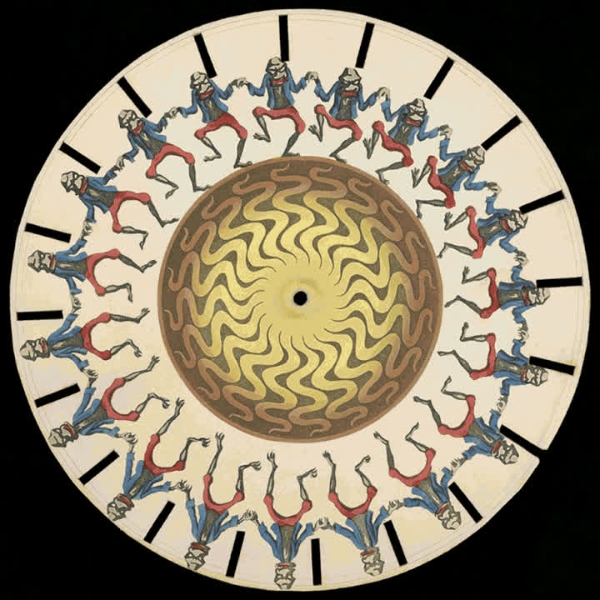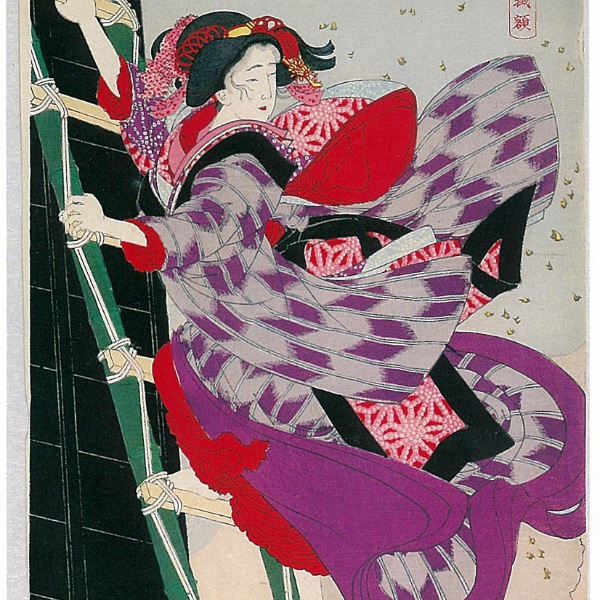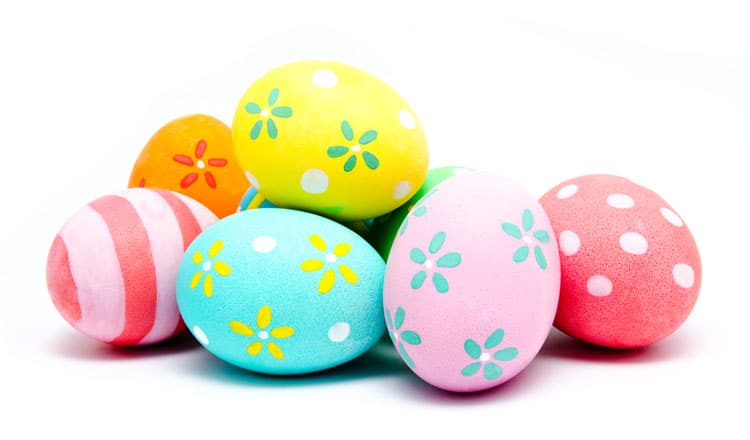
Photo: Stock Photos from Svitlana-ua/Shutterstock
Happy Easter! As you hop into the holiday spirit, you may find yourself embracing Easter celebrations, whether you're filling a basket with fake grass and fun goodies or dyeing a dozen hard-boiled eggs. While you may not think twice about these seemingly silly activities, they're actually age-old practices packed with history, springing from ancient rituals, medieval folklore, and more modern incarnations.
Want to learn more about Easter and its technicolor traditions? Before we take a stroll through the holiday's history, it's important to understand its origins—both in spirit and in name.
What is Easter?
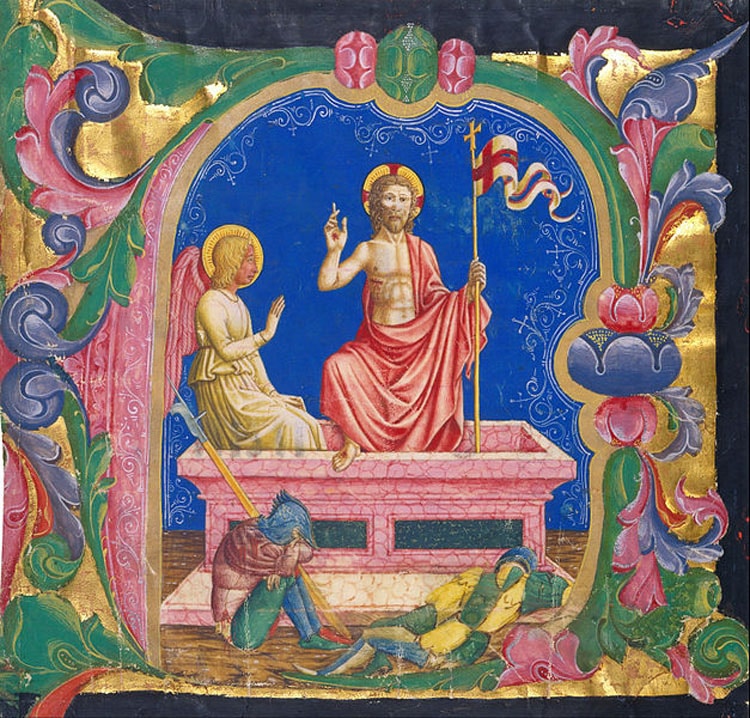
Domenico Pagliarolo, “Resurrection, in an initial A,” Last quarter of the 15th century (Photo: Google Arts & Culture, Public domain)
Easter is Christianity's oldest festival. According to the religion's core belief, Jesus Christ—the son of God who was born to the Virgin Mary on December 25, Christmas Day—rose from the dead. The resurrection of Jesus Christ is believed to have occurred on a Sunday, the third day after his crucifixion and subsequent burial.
In the Christian faith, this Sunday—now known for centuries as Easter Sunday—is the most important day on the liturgical calendar.
Egg-cellent Etymology
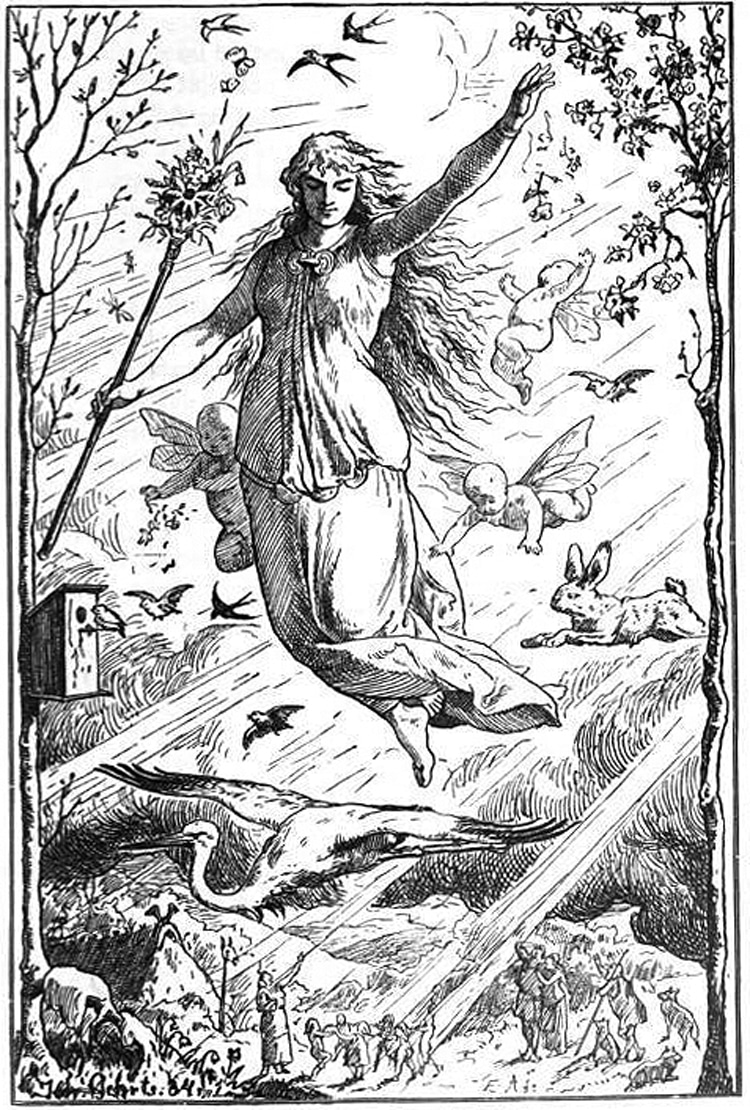
Johannes Gehrts, “Ostara, 1901 (Photo: Wikimedia Commons, Public domain)
The word Easter derives from the Old English Eosturmonath. According to Saint Bede, a Benedictine monk born in the 7th century, this term means “Month of Ēostre,” with Eostre being an ancient Germanic goddess of fertility, spring, and renewal.
By Saint Bede's time, however, “Month of Ēostre” denoted “Paschal season.” Paschal describes a relationship to Passover or Easter Sunday, which are both observed in March or April—though, when referenced by Saint Bede, this “Month of Ēostre,” exclusively referred to April.
Why is Easter historically associated with April? Unlike most other holidays that fall on the same date each year, Easter is based on the lunar calendar. Specifically, it is held on the first Sunday that follows the first full moon on or after the spring equinox. This also means that Lent—the liturgical season that commences with Ash Wednesday and comes to a close 40 days later on Easter Sunday—encompasses different dates each year.
Easter Traditions

Photo: Stock Photos from galsand/Shutterstock
Since Easter refers to the day that Jesus Christ is believed to have been resurrected, you may be wondering why it occurs according to the moon. While Easter emerged as a Christian holiday in the 2nd century, its origins go back even further. In fact, Easter's traditions can be traced back to cultures that predate Jesus himself.
Easter Lilies
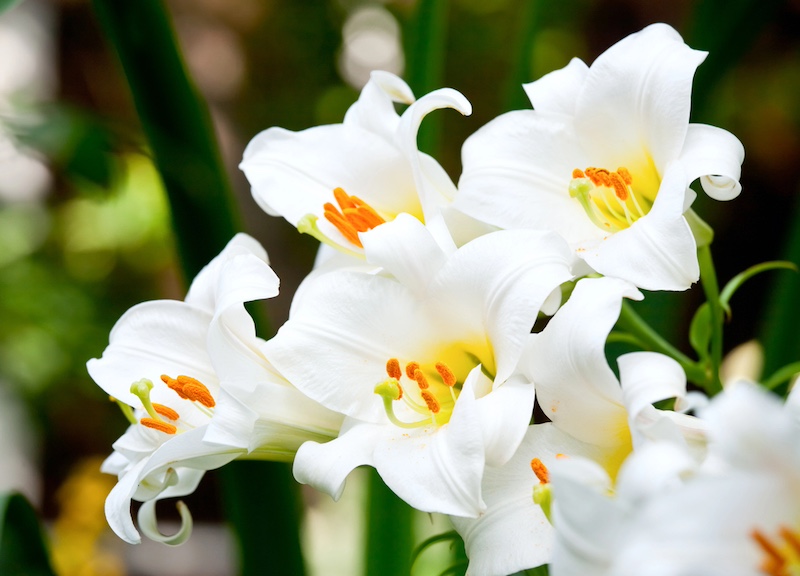
Photo: dnaumoid/Depositphotos
White lilies are a popular flower to buy for Easter celebrations. To Christians, they symbolize the purity of Christ and are referenced many times in the Bible. Although commonplace nowadays, lilies are actually native to Japan and weren't even introduced in America until the 19th century. But with so many references to them, it's unsurprising they are associated with the holiday.
Dyed Eggs
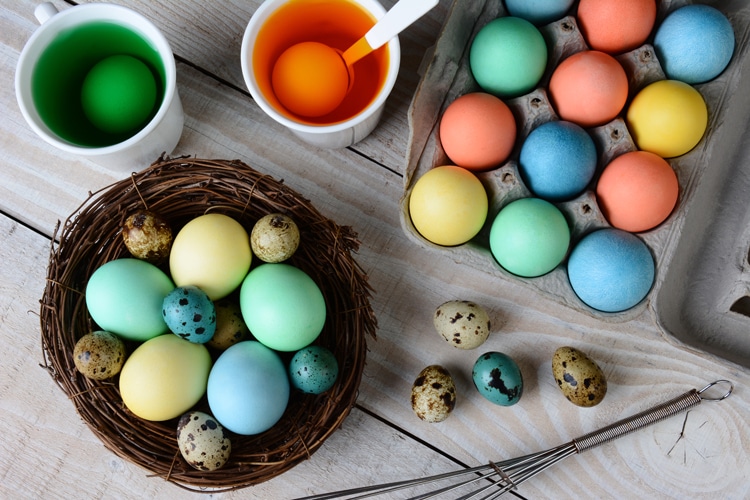
Photo: Stock Photos from Steve Cukrov/Shutterstock
Dipping eggs in dye has become an Easter staple. Like many mainstream holiday traditions—including trick-or-treating on Halloween or playing pranks on April Fools' Day—this pastime has pagan roots.
In ancient times, equinoxes and solstices were seen as sacred times. The spring solstice, specifically, was celebrated for putting an end to winter's cold and ushering in a time of rebirth. In Pagan spring festivals—celebrating the goddess of Earth, Eostre—unhatched eggs were used to symbolize new life. This concept was adapted by the Christians in Easter's early years.
“Eggs, as a symbol of new life, became a common people's explanation of the resurrection,” Carole Cusack, a professor at the University of Sydney, explains, “after the chill of the winter months, nature was coming to life again.”
Centuries later, medieval people would build upon this model. Following mass on Easter Sunday, they would feast on decorated eggs, a symbolic snack that doubled as a means to mark the end of Lenten fasting.
Today, people keep this age-old tradition alive by dyeing eggs that have been boiled or blown—and munching on replicas made out of chocolate.
Woven Baskets
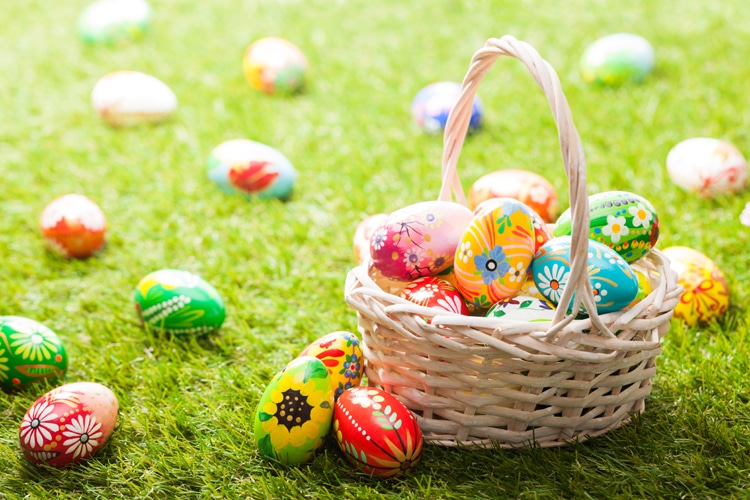
Photo: Stock Photos from PHOTOCREO Michal Bednarek/Shutterstock
Whether laid by a chicken or made by confectioners, Easter eggs are traditionally placed in pretty pastel baskets. This custom is also based on pagan ritual, as, according to Saint Bede, the Germanic goddess Ēostre was known for carrying around a basket filled with—what else?— eggs. Worshippers would also place their offerings to Ēostre in baskets.
Over a millennium later, the Germanic people would revisit this ancient lore when they created an early version of the Easter basket. Intended to look like nests, these baskets were crafted with a very special visitor in mind: Osterhase, an early ancestor of the Easter Bunny.
A Visiting Rabbit
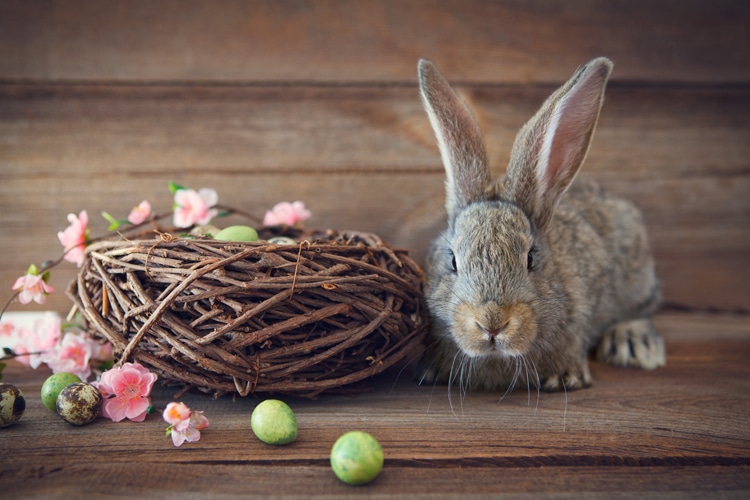
Photo: Stock Photos from Ramona Heim/Shutterstock
According to legend in Germany, the Osterhase—an egg-laying hare—would visit children's homes on the eve of Easter. Using their bonnets, children would craft makeshift “nests” for the hare to fill with colorful eggs. Eventually, the creature's gift-giving habits evolved, and candies, chocolates, marshmallow Peeps, and trinkets were added to the mix.
Why was a hare selected to serve as this special visitor? The answer, again, is rooted in spring symbolism, as rabbits and hares traditionally represent fertility.
Egg Games
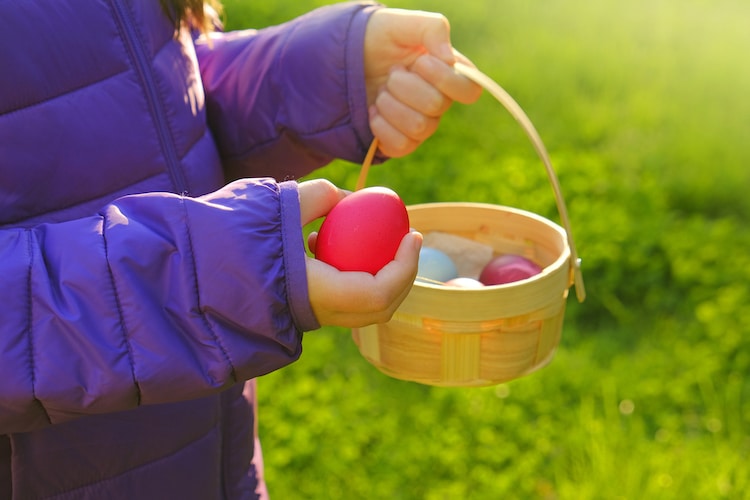
Photo: RRRmmm22/Depositphotos
The Easter holiday is also associated with many games for kids, most of which incorporate decorated eggs.
An Easter egg hunt is among the most popular, during which children must find dyed eggs, chocolate eggs, or fake eggs filled with candy hidden in different locations.
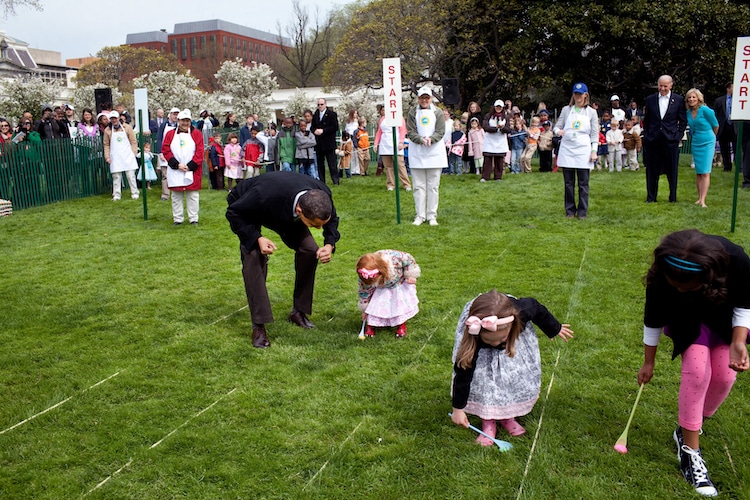
President Barack Obama hosting the Easter Egg Roll at the White House in 2009. (Photo: Pete Souza via Wikimedia Commons, Public domain)
Another popular game is egg rolling. Originating in Europe, this game was played by children who rolled eggs downhill. Today, the Easter Egg Roll is also a well-known event that is held at the White House every year, wherein children must guide an egg through the grass with a spoon.
The Holiday Today
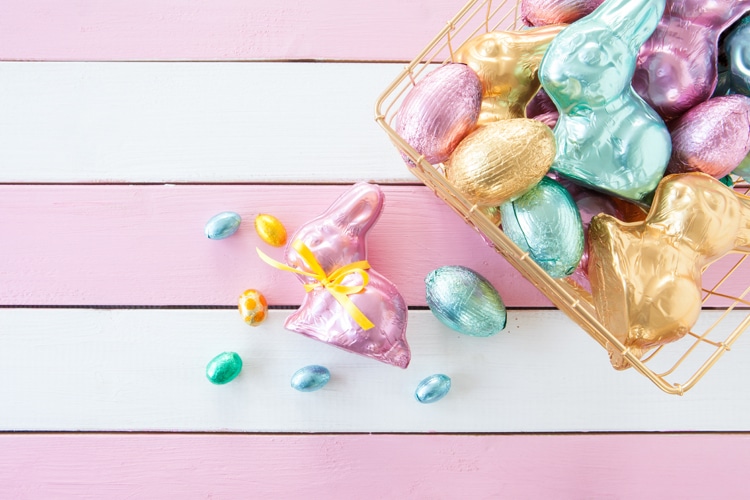
Photo: Stock Photos from Barbara Neveu/Shutterstock
Today, Easter is celebrated around the world. True to its roots, it is typically regarded as both a religious holiday and a celebration of spring. Born out of its blended history, this allows the holiday to simultaneously serve as Christianity's most important festival and as a fun pastime for children—a balance that has allowed Easter to blossom into the “hoppy” holiday it is today.
Frequently Asked Questions
Is Easter based on a pagan holiday?
Yes, the word Easter derives from the Old English Eosturmonath, which translates to the month of Eostre—who was a pagan spring goddess of renewal. In these pagan festivals, unhatched eggs were used to symbolize new life. This concept was adapted by the Christians in Easter's early years.
Why do we celebrate Easter with eggs?
In pagan spring festivals, unhatched eggs were used to symbolize new life. This concept was adapted by the Christians in Easter's early years.
This article has been edited and updated.
Related Articles:
Curious Bruegel Painting Contrasts the Solemn Nature of Lent With the Fun and Folly of Mardi Gras
A Light-Hearted History of April Fools’ Day, an Unofficial Holiday Celebrated Around the World
Groundhog Day: An Age-Old Tradition Rooted in Fun and Folklore
A “Wee” History of the Leprechaun, a Legendary Character From Irish Folklore











































































